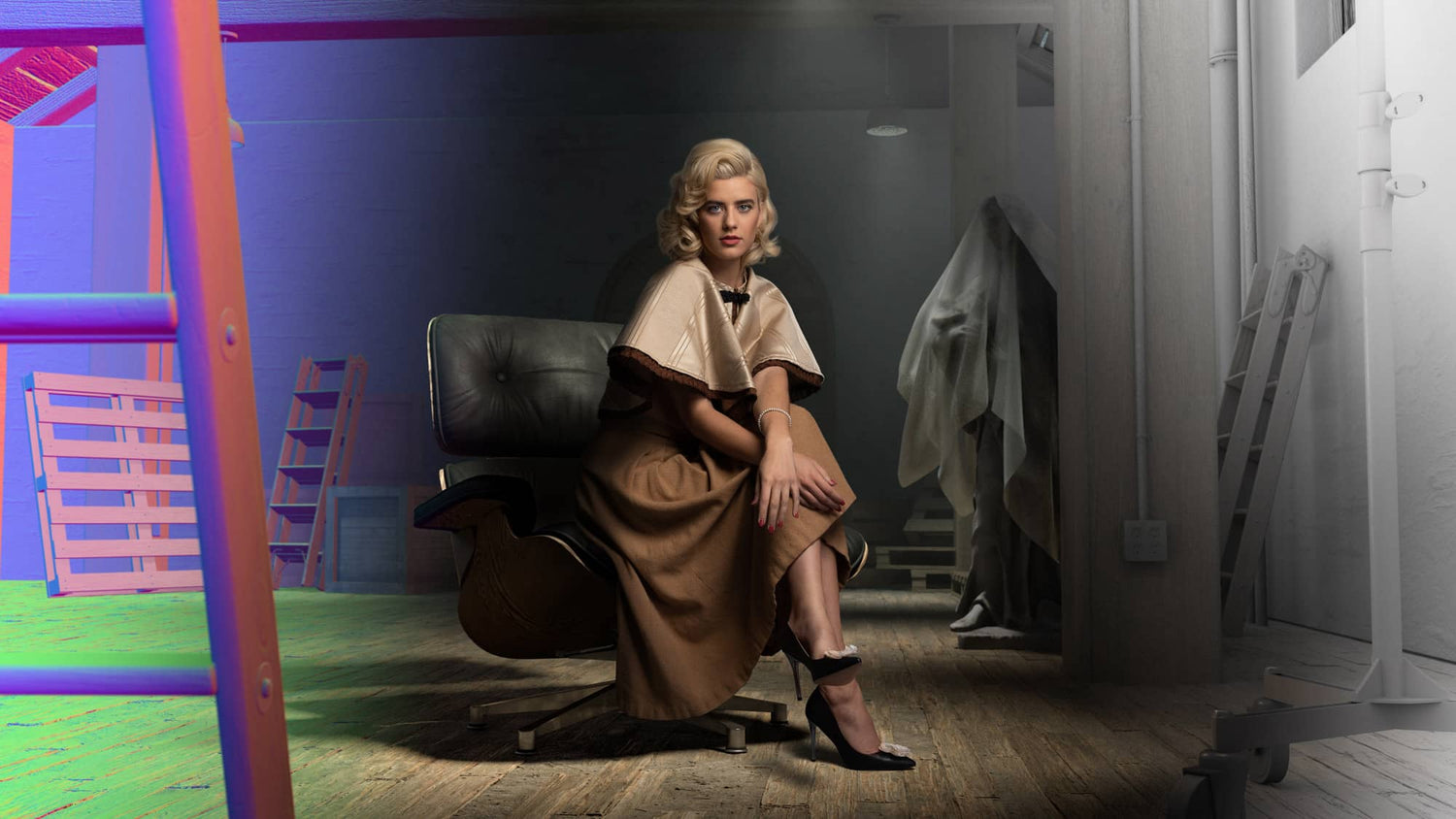How Is CGI Used In Photography?
We think of programs like Cinema 4D and Blender very similar to how we think about Medium Format or High-Resolution cameras. Both produce RAW files used in Photoshop to create an image, except in CGI; they are called "renders" and not RAW files. This is something I misunderstood for years.
What Is A Render and why do most people misunderstand it?
First, let's talk about what a render is and what it isn't in photography. When I first was introduced to CGI (and for many years after that) I thought that programs like C4D or Maya created entire perfect scenes or files that were already "retouched" and were excellent out of the gate.
I was wrong. Way wrong.
If I were to tell a photographer that they could use their new fancy Sony Mirrorless A7R IV to export 15 versions of the same photo and that this would produce 15 different RAW files that could be used differently in Photoshop, I think I would have some people’s attention.
Now think that each of the 15 RAW (renders) versions could serve a different purpose in post-production for things like detail, dynamic range, edges, 5 kinds of shadow detail, 5 kinds of lighting detail, and versions of the image where some strobes are on and some strobes are off, most would flip backward upside down and throw a wad of cash yelling take my money.

In this image taken from a few renders from Reverse Portrait Compositing, we can see how these Renders are used to blend together elements in Photoshop using a unique CGI workflow similar to any other workflow in Photoshop.
Let’s look at this through the lens of CGI product photography. If you have ever shot studio product work, then you know that it often requires you to lock your camera off, and create 5-30 images from the exact same angle. Each image might have slightly different lighting or focus.
This is essentially the same process except you are essentially stuck with what you captured in your camera whereas, with cinema 4d for photography, you can make a crazy amount of changes to your set or subject or both if you are combining CGI and photography.
When this all clicked I realized that cameras are essentially the same thing as CGI photography software. So how do photographers use CGI? Well, you look at it all the time and you don’t even know it. It’s everywhere and it has been for a long time, especially with CGI car photography, and is becoming more and more common in CGI fashion photography.
The 3 Skills You Need For CGI As A Photographer
CGI for photographers is such an opportunity for photography because it's the exact same process that still requires a lot of compositing and blending layers in Photoshop. In my quest into this new venture, I'm now convinced that you need 3 traits or skills to create beautiful images when combining CGI with photography.
Knowing Photography Lighting Is CGI LightingThe first skill you need is your understanding is lighting and how to light an object. If you can dissect images on know how something was lit, you have a major head start in CGI. Some wizards coded the CGI world to work the exact same way as the real world and (for the most part) materials in CGI land react the exact same way as in real life. It’s one of the many benefits of CGI.
This is why some photographers pick up CGI quickly because they can light a scene in their head and know the types of modifiers they can use to create a type of light. If you geek out on great modifiers and love light quality then you may love lighting a set in 3D.
Knowing How To Composite & Use Photoshop
If you know the ins and outs of Photoshop and blend modes, this will be a massive advantage for artists that want to create imagery using renders. And keep in mind that CGI can be used a little or a lot in any image. Because the workflows are essentially the same, it really becomes easier for photographers to pick up.

One specific use case that is particularly interesting to us at PRO EDU is fashion photography and the many ways to use CGI. Sets, locations, props, and products are a big part of fashion photography. This means that a Paris set could be created using props or fashion products that don’t yet exist. You simply need a model and the rest can be achieved in post with 3d models and 3d assets using Reverse Compositing.
Learning The Roles & Language Terminology
The hardest part about learning CGI is the steps and processes that it takes to set up. It’s very similar to the camera settings on your DSLR or mirrorless. There’s a lot of menus and buttons that need to be pushed in order for the camera to produce a RAW image. The same is true for CGI and learning a program like Cinema 4D, Redshift Render, or Octane Render Engine.
Conclusion
CGI is taking over the product photography industry and it’s important that photographers learn how to use this technology. More art directors are figuring out they can save time, money, and resources by hiring a few people with knowledge of CGI for their shoots rather than dozens of employees on set. The results are often better because you don't have as many variables in play or mistakes happening, but learning these workflows does take some time and commitment if you want to make them your main method of image creation. If you're interested in jumping into the world of digital imaging here's an intro class for beginners which will cover all the basics needed to get started using C4D - one popular software package used among professional CG artists.









